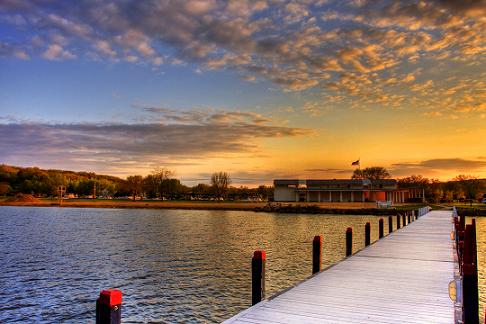
If it is the 1970s and you build a four unit condominium building out of various materials, but mostly wood, and then you apply several coats of stain and varnish, would it be a surprise for you to later learn that the structure you just built would burn on one frosty night perhaps 35 years later? After all, a wooden structure will age different than a steel one will, and wood will dry out and it will become less a structure of cedar and more a stash of kindling under an oil based roof. When you nail together wood and paint it and put a roof over it, the expectation is never that the structure you labored over will burn nearly to the ground not too many decades later, but it happens.
And happen it did, last week at Abbey Hill. A four unit complex at 850 Hillside in Abbey Hill caught fire one night last week, and when volunteer firefighters responded and fought the flames valiantly they made a strong, but futile, effort. The building has been declared a total loss, and perhaps the best news in the entire event is that the fire did not spread from one brown kindling box to another, and we should be thankful for this. No one was home, as is the nature of a vacation home in the middle of a winter weekday, so most of the casualties were likely “welcome to the lake” signs, though at least one owner did use the unit as a quasi-full time residence. That owner was a client of mine, and that unit was one that I had for sale last year.
Fire aside, Abbey Hill could be studied by graduate students working on a thesis engineered to discover the fault that led to our housing crisis, and continue studying it in order to relay the solution to that same crisis. Abbey Hill has seen it all over the past ten years, and what it has seen can teach us all a lesson about economics and housing and the effects of both. If we are to rewind to the ramping up of the housing boom, we’ll find Abbey Hill, sitting high on its hill outside of Fontana, positioned nicely to experience appreciation that measured as much as 50% over a five year period.
I’m less concerned about the rise this morning than I am the fall, so let’s fast forward to 2008. Just one Abbey Hill unit closed in 2008 (per MLS), and it was a pretty unit on St. Moritz that found a buyer at $265k. I imagine the seller at the time felt that he (or she) had gotten badly dinged on that sale, but oh how much better they felt a year or two later. 2009 brought the first full year of real estate misery, and with it two more sales. Those sales were at levels lower still, with a unit closing for $190k and another for $223k. It should be noted that the $223k sale was at 850 Hillside- a unit that no longer physically exists.
2010 logged three more sales, and the slow but steady clearing of tired inventory continued without much interruption. Those sales, however, included a foreclosure or two, and sales prices plunged to $147,500, $150k, and $195k, respectively. I’ll bet Mr. St. Moritz from 2008 felt pretty good about $265k right about then. The inventory was still swelled, with perhaps six or seven offerings available most times during 2010, but that inventory was shrinking, and as a lesson to other down markets it should be noted that in tough real estate times any volume is good volume.
In 2011 there was some question for this market, the broad Lake Geneva market and the Abbey Hill market specifically. Would price capitulations of the past several years continue for another year, or would there be some stopping to all that bleeding? Can the answer be both at the same time? There were eight sales in Abbey Hill in 2011. More than the previous several years combined, and in those sales there was a value range firmly established. There were three cheap sales, cheap indeed: $137,500, $110k, $125k. But then there were five more at values that reflected not an increase in prices but a leveling of buyer expectation with seller willingness: $185k, $190k, $190k, $195k, and $200k. I sold the unit for $195k, and I wanted it to sell for less. But then again, I always want my buyers to pay less, so that’s not necessarily some Abbey Hill oddity. Even at $195k, the sale wasn’t a steal but it was a reasonable price paid that represented value in line with other current comparable sales.
And that sales flurry brings us to today. We’re four units short, due to the burning, but we’re back to even when it comes to the Abbey Hill inventory. Today there isn’t a single unit available on the MLS. Not one. The sales of the past three years have absorbed all the inventory that weighed on the market and produced both foreclosure and the inevitable low prices. Abbey Hill has recovered now, and I expect values to hold steady in the $170k to $210k range for 2012. I’ll bet we’ll see another sale or two there this year as inventory ultimately returns one unit at a time. The new building will be built to replace the burned one, and those units will immediately become the most desirable in the entire condominium, and for good reason. If pricing expects to remain mostly the same, wouldn’t you prefer a brand new unit? In the mean time, see me if you’re interested in a ridiculously affordable vacation home less than a mile to the Fontana lakefront.
Photo by Matt Mason Photography.
